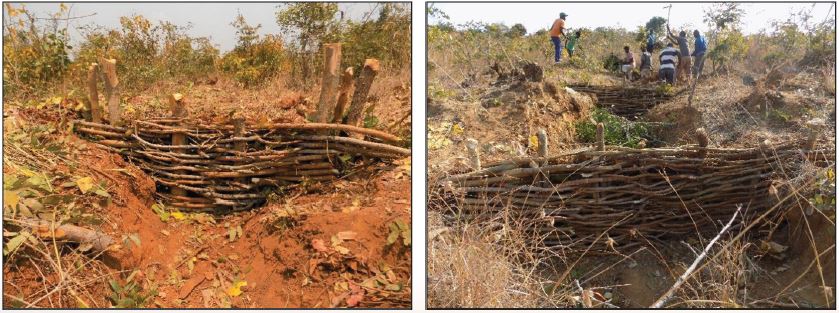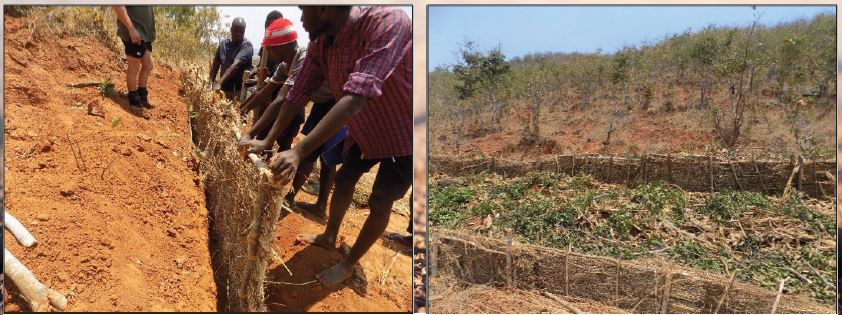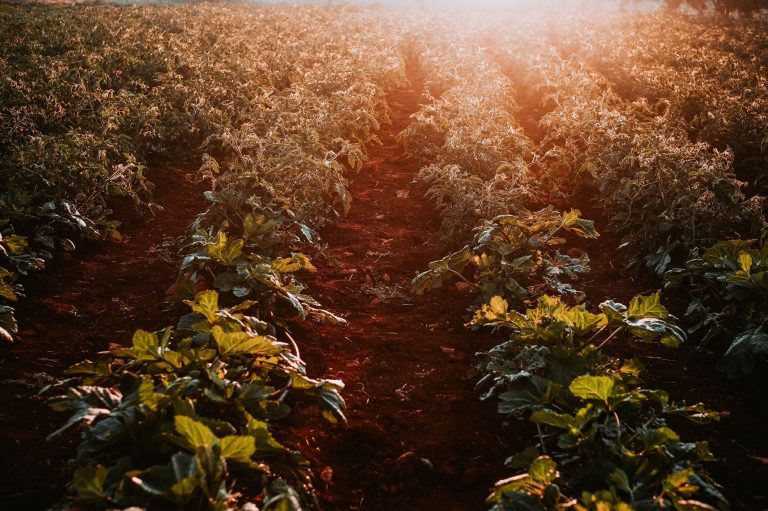While more and more production is demanded from farmers, soil erosion is frittering away arable land. Ken Coetzee and Wallie Stroebel of the South African company Conservation Management Services went to Mzuzu in Malawi to train the people living near the town how to fight erosion.
They were invited by a Danish company, Wells for Zoe (WfZ), who are working on the Enyazini environmental project in the Mzimba District in the northern parts of the country. The company’s focus is building wells to ensure water security for the community, but they are also involved in restoring the soil by means of reforestation of the mountain slopes, and the prevention of erosion.
What is erosion
Erosion is the result when soil is washed away during heavy rains. This process is made worse when there are no or not enough plants, like trees, shrubs, and grasses to keep the soil together. In this area, the erosion was caused by the deforestation of the mountain slopes. Using the wood of the indigenous trees for building purposes and firewood, left the steep slopes bare.
When it rains, the water rushes down the slopes unchecked, washing away the soil on the banks of the waterways, such as streams and rills, which are small rivers that only run when it rains. Often-used footpaths across the veld have the same effect, as water washes down them, creating gullies.
The water running down the slopes causes gullies, which grow deeper whenever it rains a lot. Where the rush of water in the gullies meet soft soil, it creates a head cut, which is a deep hole with steep sides.
This often happens next to roads when the water runs along the surface of the road, washing away soft soil next to the road, causing not only potholes, but also big dongas next to it.
Water that runs off from cultivated fields where vegetables are grown also causes erosion. Usually, the traditional method of cultivation removes all vegetation to leave the soil bare for hoeing and planting. When the plants are irrigated, the water runs off towards low-lying areas, taking the precious topsoil with it.

Figure 1: Branch checks, vertical poles driven into the soil with a woven screen of thinner branches and a backing of cut brush and soil.
Types of erosion and methods to stop it
The four types of erosion were addressed in the following ways:
Head-cuts or big dongas
A donga or head-cut is created by water running freely down a slope. The shape of the head-cut is completely changed by levelling the steep sides. Vegetation is planted on the levelled-out sides to keep the soil from washing away. Branch checks and grass fences can also be used lower down from the head-cut where the runoff water has created a gully.
Gullies and rills
Branch checks, made by weaving supple branches through a row of poles planted across the gully/rivulet, were installed to slow down the runoff water. These branch checks must be installed from the top of the gully where it starts, and at regular intervals along the length of it.
Slopes and open ground
Open ground and slopes that are eroded where runoff from cultivated lands occur: Grass fences are made by tying bunches of tall grass to a row of poles that are planted across the flow area to slow down the flow of the water.

Figure 2: Specially made grass fence, fitted into trenches, secured to poles and with brush and grass packed over the bare soil in between the fences.
Bare, mostly flat land
Bare land that is flat or gently sloping with very little vegetation cover: Rows or hollows are dug across the area where the water usually flows.
These hollows have a berm or little wall on the outflow side. This creates little ponds that slow down the flow of the water and allow it to sink into the soil.
All these methods make use of dense packing with brush or grass on the upward side of the branch check, the grass fence, and the steeper downward side of the hollows. The materials needed to create the structures are usually freely available in the area, but care must be taken not to strip the area bare of small trees, brush, or grass. This will simply create new erosion.
The installations must be regularly inspected after rains to ensure that they are still in good shape. If not, they must be repaired.
For more information, contact Ken Coetzee and Wallie Stroebel of Conservation Management Services, from George, South Africa. Contact Ken at (+27) 76-227-5056 or Wallie (+27) 82-493-1441, or visit their website www.conservationmanagementservices.co.za










To the proagrimedia.com owner, Your posts are always well-delivered and engaging.